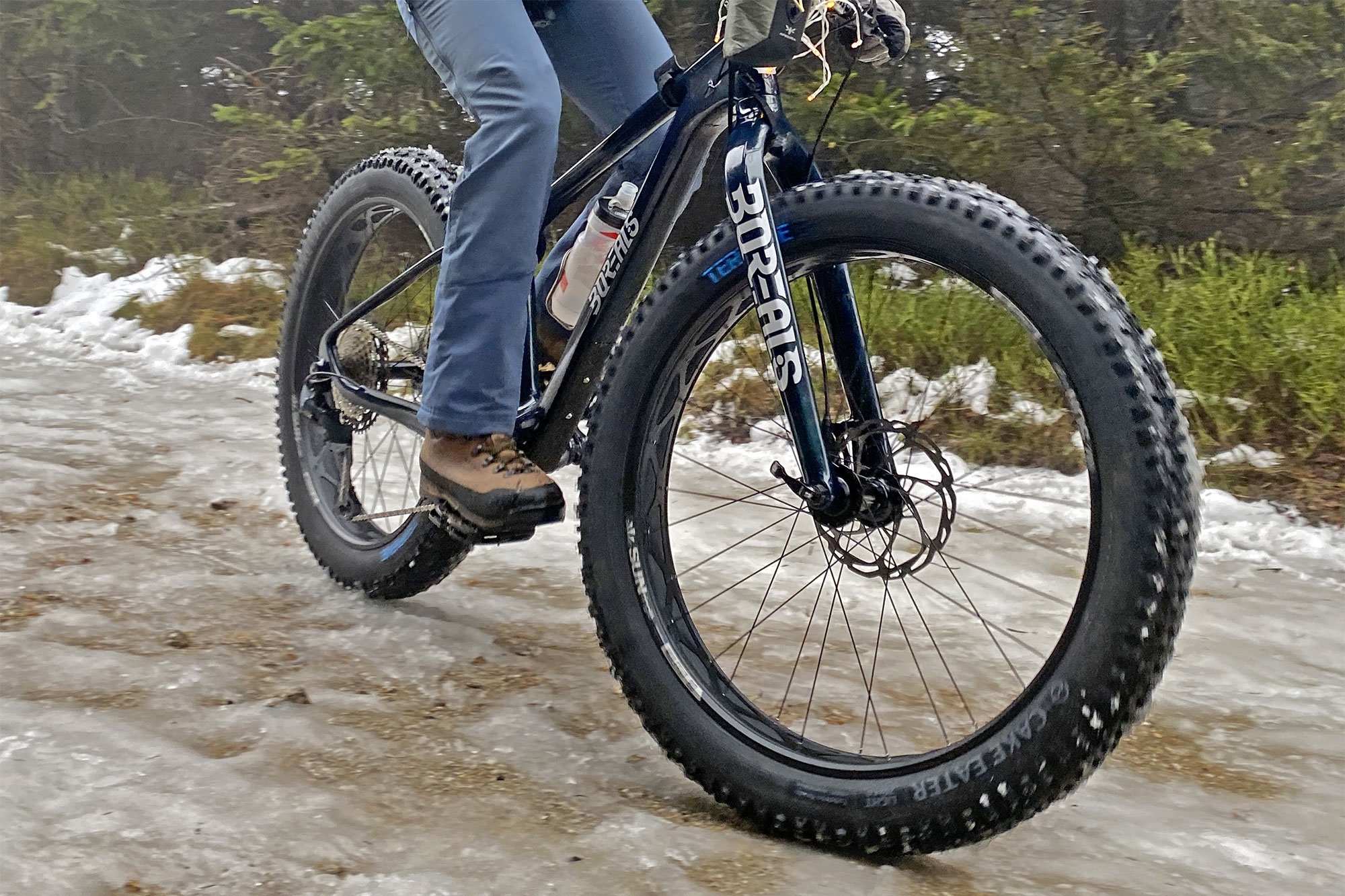This Borealis Crestone review is a long-term look at a bike that has been on the market for many years, but still is delivering smile after smile. Easy to maneuver, yet still stable in notoriously loose conditions. Lightweight & light feeling, even with those massive tires. Not exceptionally progressive geometry these days, but still ahead of its time to create a versatile ride from snow to soft leaves to mud to summer sand dunes…
Borealis Crestone, a benchmark lightweight carbon fat bike
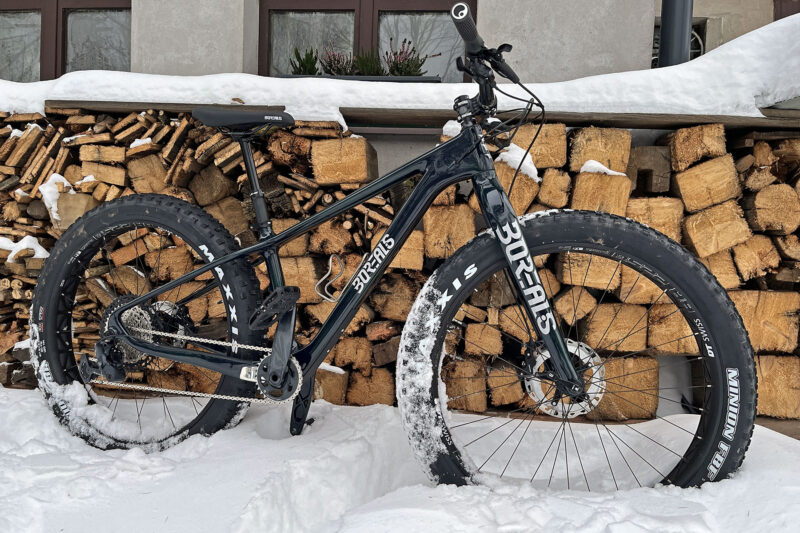
The Borealis Crestone first debuted all the way back in fall 2015. And yes, we’re about to write thousands of words and share tons of photos of a bike that has been virtually unchanged in more than 8 years. You want to know why? Because it is still a great bike, and still getting better with the addition of modern fat bike tires and suspension. Oh, and it’s actually more affordable now than it was eight years ago.
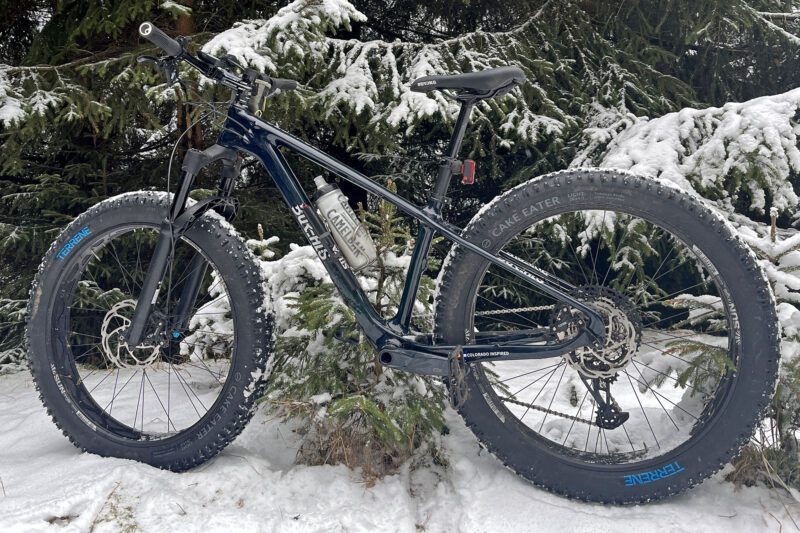
Plus, we’ve spent most of last winter playing in the snow on this bike. Winter is back, and it’s getting thrashed in the snow again. And we learned some lessons, that could be helpful to pass on if you are contemplating a fat bike purchase.
Now, I don’t know if you really do need a fat bike (n+1, and all notwithstanding)? But we live in the mountains and totally do.
Let’s break it down

The Borealis Crestone is a lightweight carbon fatbike with big tire clearance – up to 26″ x 5” or 27.5″ x 4.5” or even 29″ x 3.0″ – and geo ready for 100-120mm of fork travel. We never stripped the frame bare, because a bike with tires this massive is never gonna break the UCI 6.8kg weight barrier.
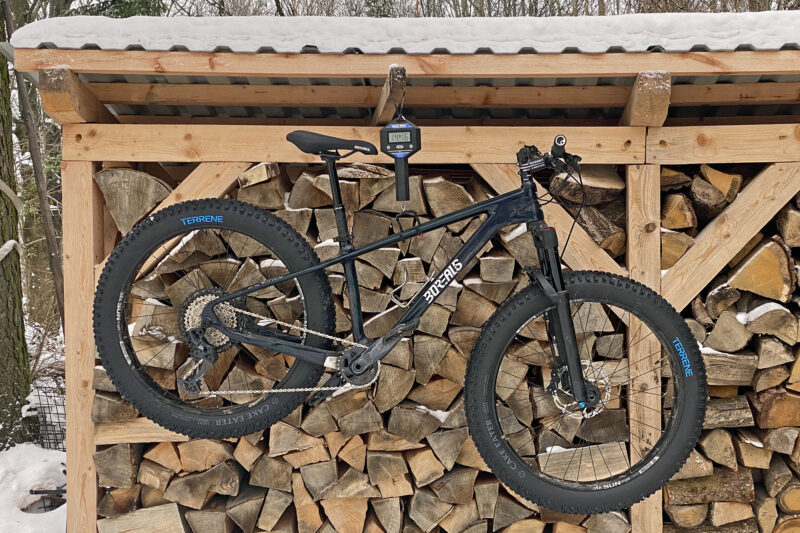
But built up complete with a KS Lev Si dropper post, an affordable GX Eagle mechanical group, burly alloy cranks, low-cost 26″ wheels but nice 4″ tires, flat pedals, and a Manitou Mastodon fork, it still weighs just 14.16kg (31.2lb). And with the full carbon Borealis fork, it’s 1375g lighter at 12.8kg (28.2lb). Sure that’s no ultralight compared to a carbon XC hardtail, but with tires that easily range from 1200-1700g a piece and tubes that weigh up to 450g, it’s pretty light. And it feels like that out on the trail.
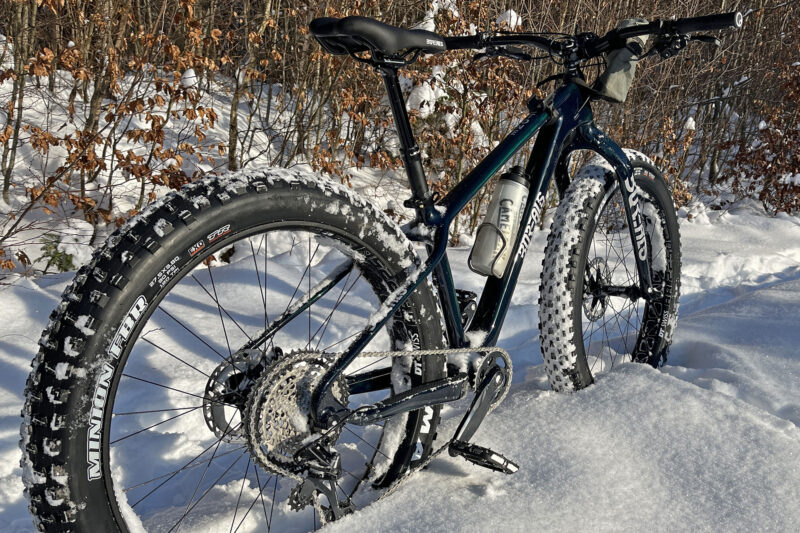
Fat bike standards-wise, the Crestone features a BSA threaded 100mm bottom bracket, 76.5mm chainline, a 31.6mm seatpost, 1.5″ tapered internal headset, plus 15x150mm front & 12x197mm rear thru-axles. It has conventional internal cable routing, including for a stealth dropper seatpost AND a front derailleur if you are still living in 1999.
Borealis Crestone’s limited evolution
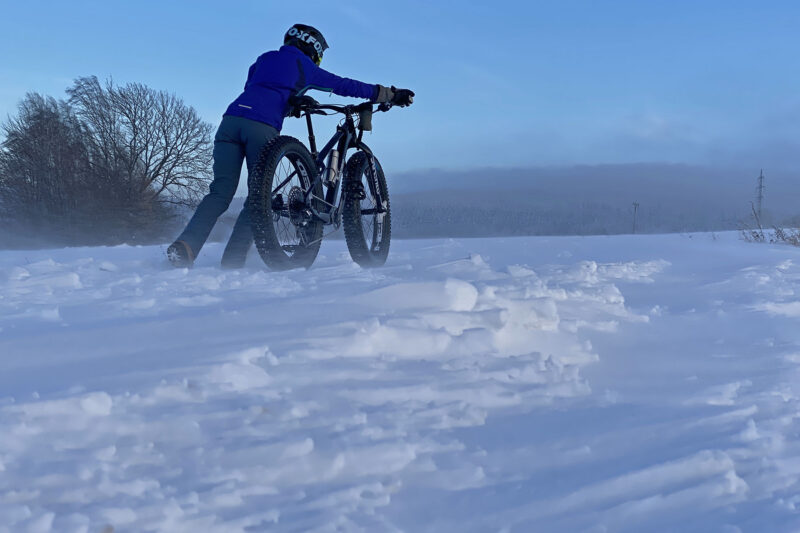
This fat bike hasn’t really changed its geometry in a decade, mostly dating back to its Borealis Echo predecessor. But in a wide 4 size range (S-XL), it actually offers longer Reach and lower Slack on our Small test bike than many newer fatbikes. Perfect for out short 165mm tall test rider.
Old School Modern Fatbike Geometry
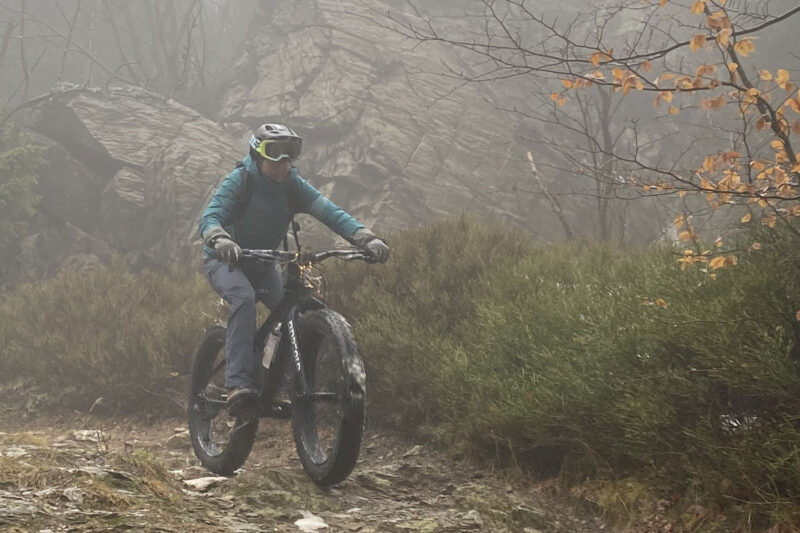
The fully rigid geometry of the Borealis Crestone seems oddly steep compared to modern hardtails (or some newer fat bikes) with a 70° headtube. But its secret, is that fat bikes are weird. And the loose terrain you ride them in with heavy tires is not normal. That “quicker” handling helps counteract the slow steering you get from 2 kilos of front tire & tube. And Borealis balances it at the other end with long 455mm chainstays, that help keep the bike moving in a straight line for stability, when grip is lacking. It’s much more common to spin out your rear wheel on a fat bike than a normal hardtail. And I can’t remember sliding many snowy freeride downhills where I wouldn’t have killed for more stability.
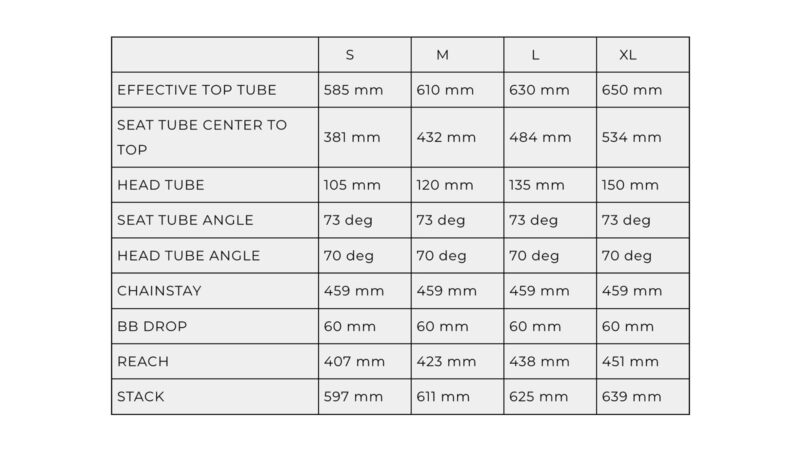
Oh, and swapping in the 120mm fork… at 30% sag, it does slacken the head angle by 1°, raise the effective Stack by 7mm, and effectively shorten Reach by 11mm. It’s at 50% of that suspension fork travel where the geometry evens out completely with the full rigid setup, which feels like a sweet spot suspension-wise, since it’s only momentary big hits that really go beyond that.
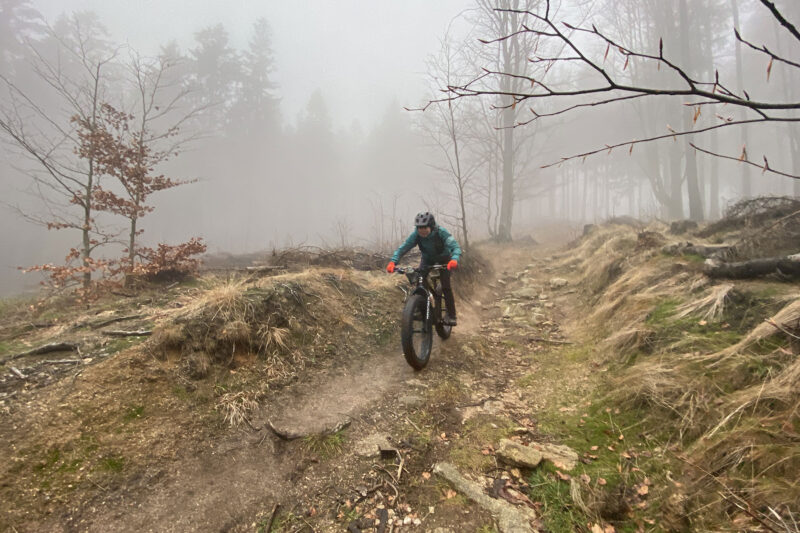
We’ll also ignore the 73° seattube angle a little bit, because Reach is a better measure of fit. And with zero offset MTB posts, you can usually slide the saddle a bit forward for a steeper ‘virtual’ seat angle and improved climbing efficiency, if you want. The trick here though, is that you actually do a lot of seated pedaling to power through loose terrain on a fat bike, so you don’t actually want quite as steep a seat angle as you’d expect on a modern trail bike.
As I said, good fatbike geometry is weird.
But what tires and what wheel size should you get?
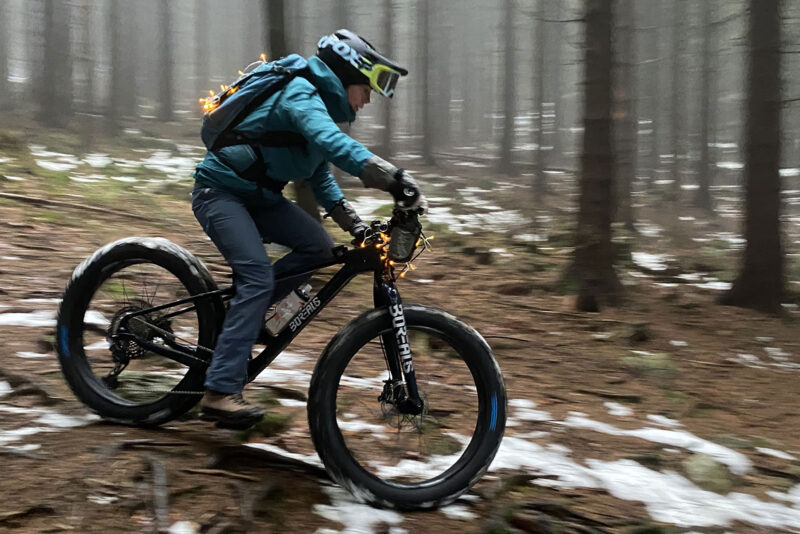
This is genuinely the biggest dilemma in the fat bike debate. And really, we’re gonna have to truly answer it in a separate article. But tires and wheel diameter really make the fatbiking experience (as does wildly-low tire pressure). Make the wrong choice in wheel diameter (hint: 26″is dead) and your fat bike will just feel a bit slower than it already is. But get the wrong tires for the conditions you ride. And you genuinely won’t be having a good time.
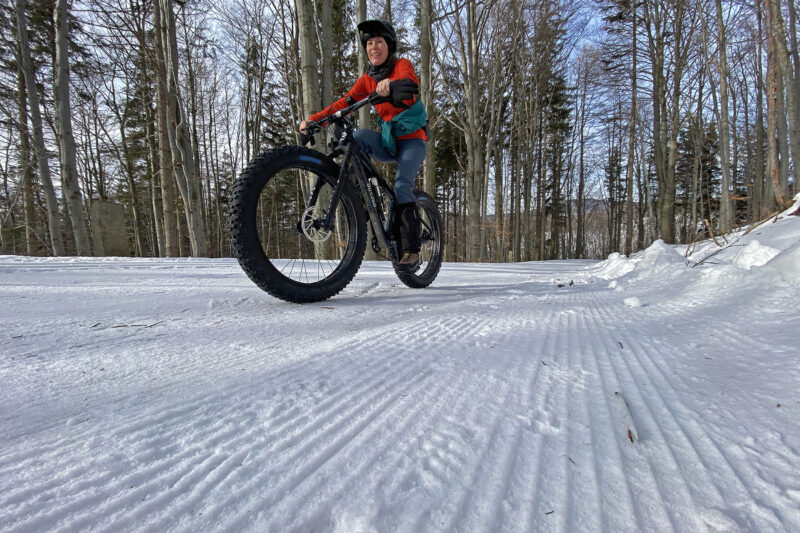
In ultra-abbreviated fashion. Fork out the money for lighter, more supple tires if you are really riding in snow. If you ride hardpacked or groomed trails – whether dirt or snow – low-profile treads do roll noticeably quicker. But if your terrain is properly loose, make sure you have some structured directional shoulder knobs, as they’ll help hold your line.
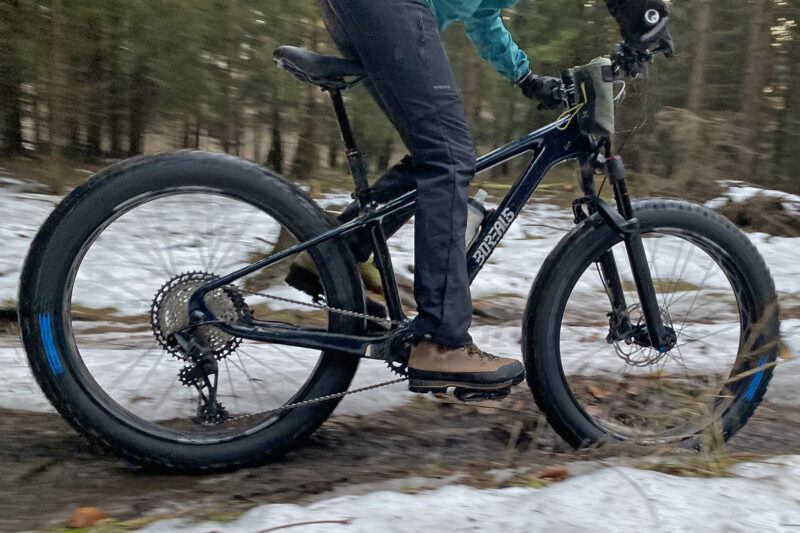
If it freezes and thaws at all in your winter season, seriously consider lightweight studded tires – their grip is out of the world. And don’t forget, even though bigger diameter is better, wider isn’t necessarily better. A longer slightly more narrow tire contact patch is likely much easier to pedal through soft conditions, and is easier to control in a straight line.
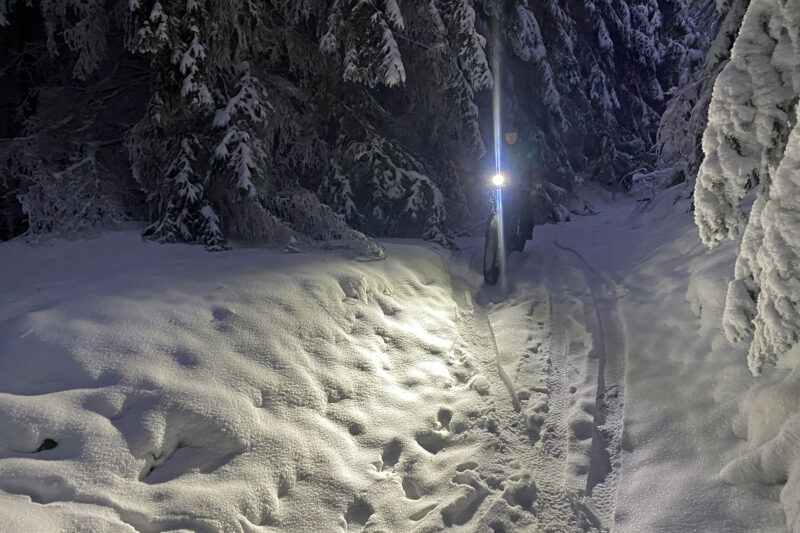
It’s a lot more complicated than this. But that is a decent starting point.
And what about the actual wheels, themselves?
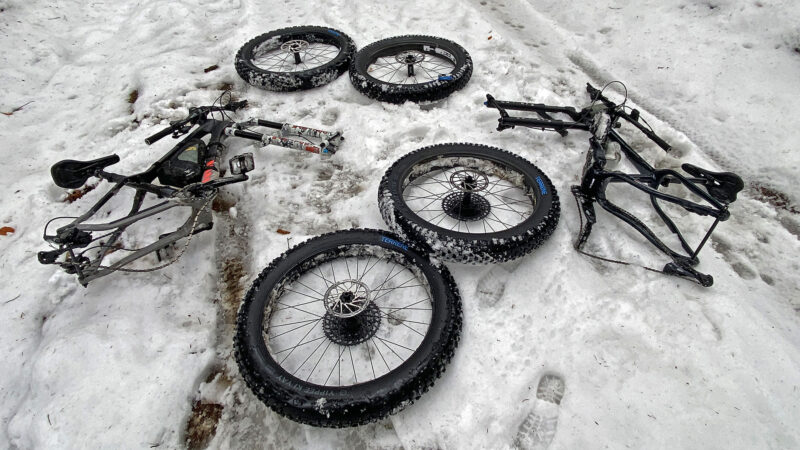
That’s another more complicated question. We tested 4 basic wheelset options. A super fancy HED carbon 26″ wheel, and more affordable ally 27.5″ HED wheels. Then 27.5″ alloy DT Swiss BR2250 wheels, and budget alloy Sun Ringlé Mulefüt wheels in both 26″ & 27.5″ sizes. The carbon HED wheels cost $2000 for the pair. The alloy Sun Ringlé pair sells today for $420. The difference in weight of a 26″ wheelset is 614g for the pair. It’s not nothing, and we could notice the difference a bit, but it’s not $1600 of performance difference.
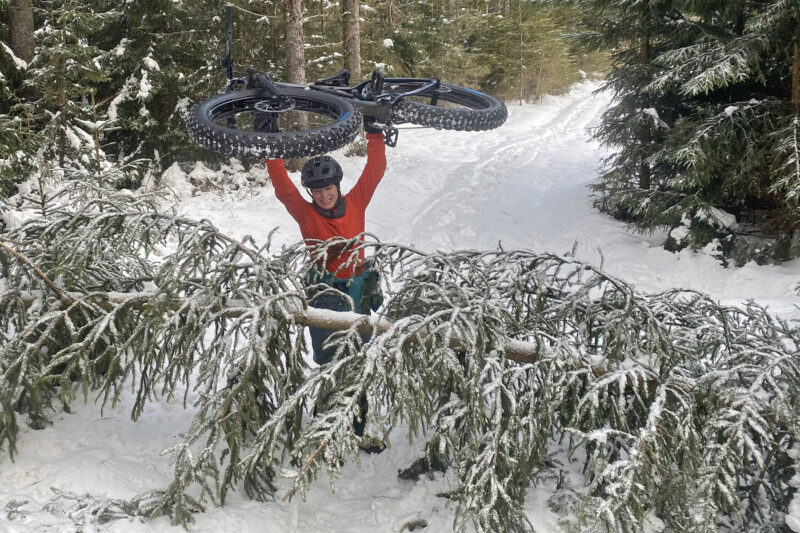
Maybe more important, even sticking with butyl inner tubes, we realized we could save 420g for a pair of wheels just using light 27.5+ tubes vs. 26 fat tubes. For no additional cost. Butyl tubes are quite stretchy, and fat bike low pressures are pretty forgiving. All of our wheels are tubeless compatible, but swapping tires around and worry about sub-freezing sealant performance, we never set any up tubeless. And had no issues.
OK, but how does the Borealis really ride?
Fat Bike setup and riding style
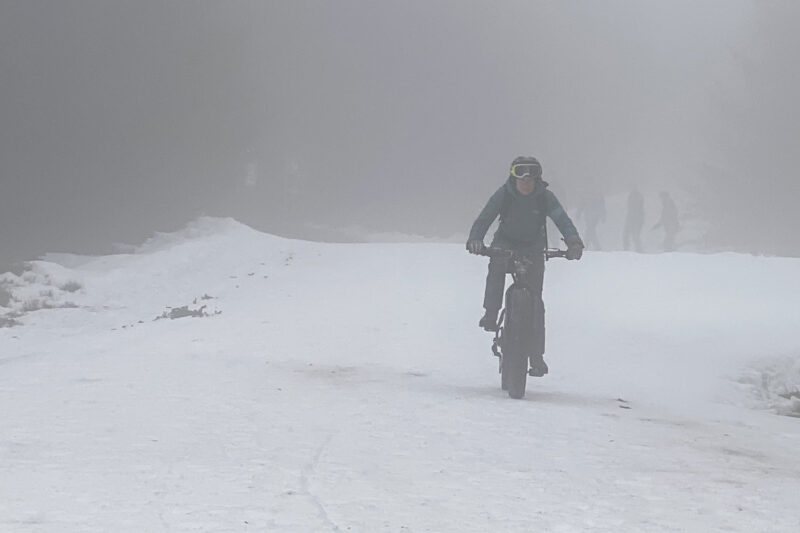
My (Veronika) main focus is trail riding and enduro, then gravel riding, and then in winter primarily fat biking. All of last winter and sometime this past summer, I tested the Borealis Crestone. It’s maybe my 4th or 5th fat bike, with a lot of time spent on a couple alloy Duratec expedition Big Paws, faster Fat Jacks, and the more trail-oriented Cannondale Fat CAAD over the past few years. All with rigid forks. The majority of my fat bike riding is on hard frozen surfaces and ice. But I also hunt fresh powder to ride and extend into the melting snow of spring.
Last winter I didn’t get as much packed snow as I wished for. But luckily, we live in a mountain pass, so I still got in 5-600km of snowy trails over 25 separate rides. Those snow freeride rides often don’t rack up the kilometers very fast!
Then, in summer I grabbed the chance to ride sandy beaches on the Baltic Sea.
Borealis Crestone fat bike’s first rides

My first rides were on the original setup that I obtained from Borealis, with a price-conscious mechanical GX build and a rigid carbon fork. Think a roughly $2500 build with a dropper and alloy wheels. The dropper is optional, but obviously a pretty key feature to have on a fat bike. Like any trail bike, it is nice not to stop on the top of a hill and just fly down the trail. BUT with fat bikes specifically, I found it very useful when you need to get back on your bike after crashing in deep snow, passing a non-rideable obstacle, or just simply starting to pedal in steep uphill in deep, uneven snow.
Personally, I don’t love the KS Lev iS dropper, as you have to press the remote pretty hard/far to get the “action”. And once it shoots up, it is like a rocket launch, while I prefer softer, smoother dropper action.
How does it look, and how does it compare?
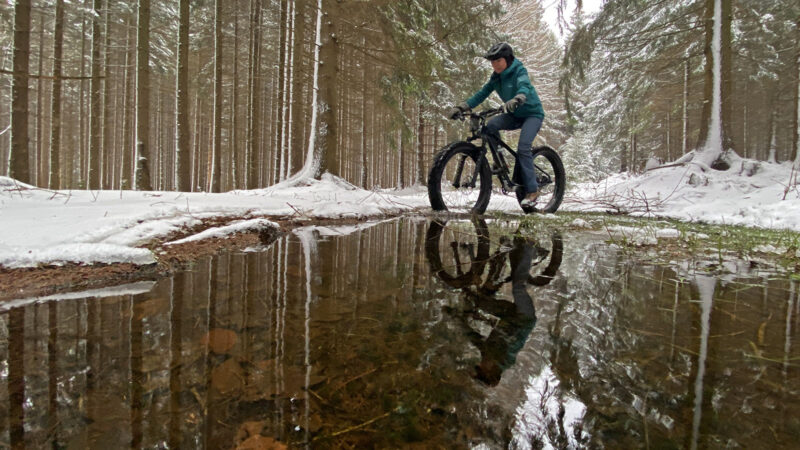
I rode the bike in differing snow conditions – powder / icy snow / slush / mud / or dust over loose leaves. And I used at least 3 different sets of wheel & 5 tires, in both 26″ & 27.5″ diameters. Always hunting that best combo of weight, grip, steering control & general ride feel.

Compared to the other fat bikes I rode previously – no matter what wheel+tire combo – the Crestone felt lighter, handled extremely well and I fell in love with it pretty quickly. Plus, who couldn’t love the amazing color-changing green-tinted raw carbon frame, that in light (especially in direct sun) really resembled the Aurora Borealis. I know it sounds corny, but when the sun shines this bike looks great.
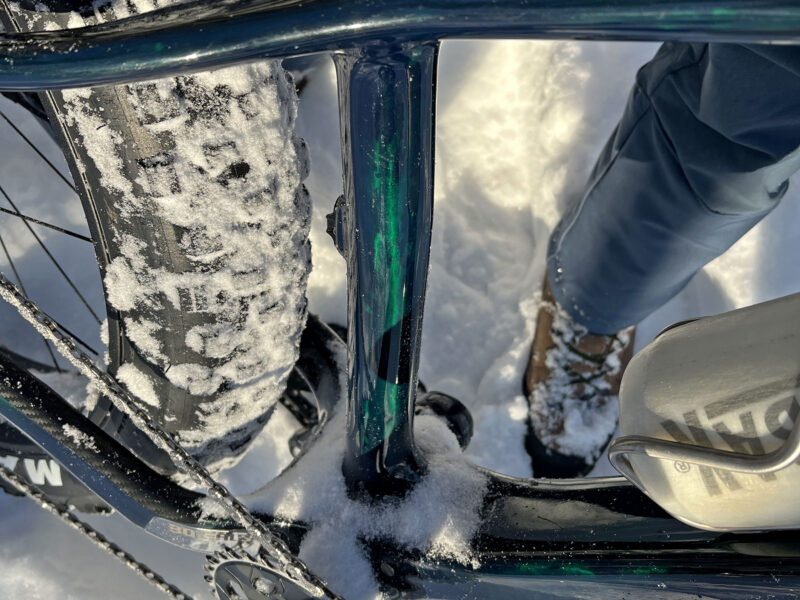
Without direct light, the dark green frame looks nearly black. But in the light, the carbon structure shines in shades of light green to blue. It’s a simple personal thing, but I wish all my bikes popped like that in the sun.
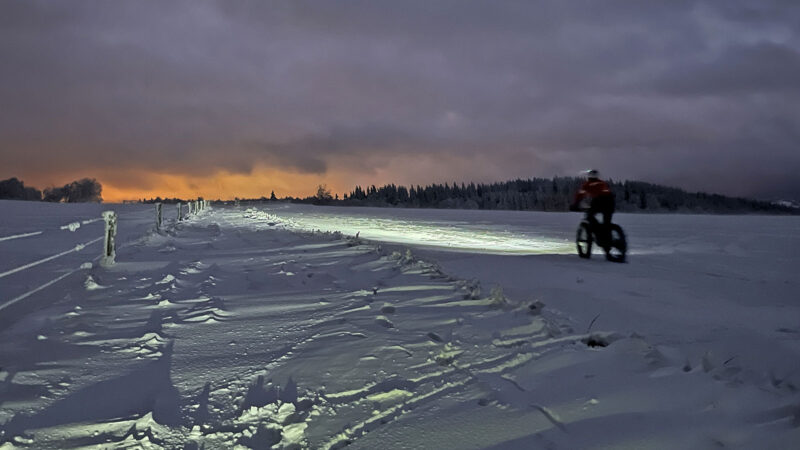
Curiously, we did a lot of riding inside clouds and in the dark. Such is winter in the Czech mountains.
Fat Bike Riding Review – Borealis Crestone carbon fatbike
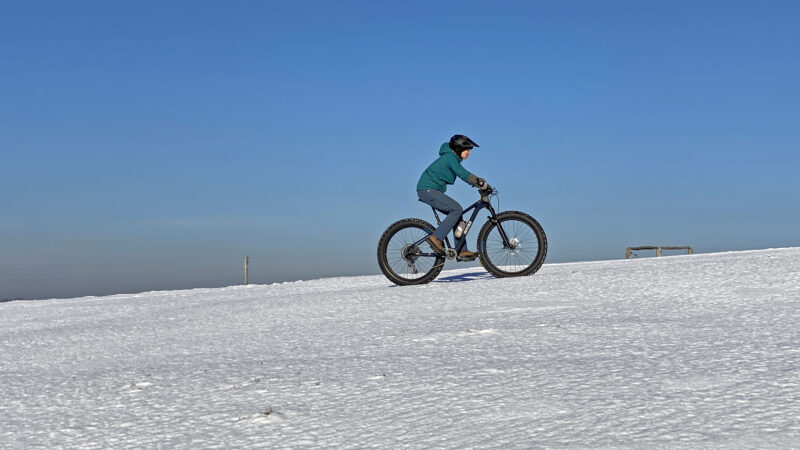
While riding, the Crestone and its curious fatbike-specific geometry is simply responsive and climbed easily. I felt I was flying on flats. And I even enjoyed going uphill, as well. Speed was especially pronounced with the larger diameter 27.5 wheels and narrower 3.8-4″ tires. The combination of light carbon frame, rigid carbon fork & oversized carbon handlebar felt really responsive. It’s really a great setup riding smoother packed snowy roads and groomed snow trails. But…
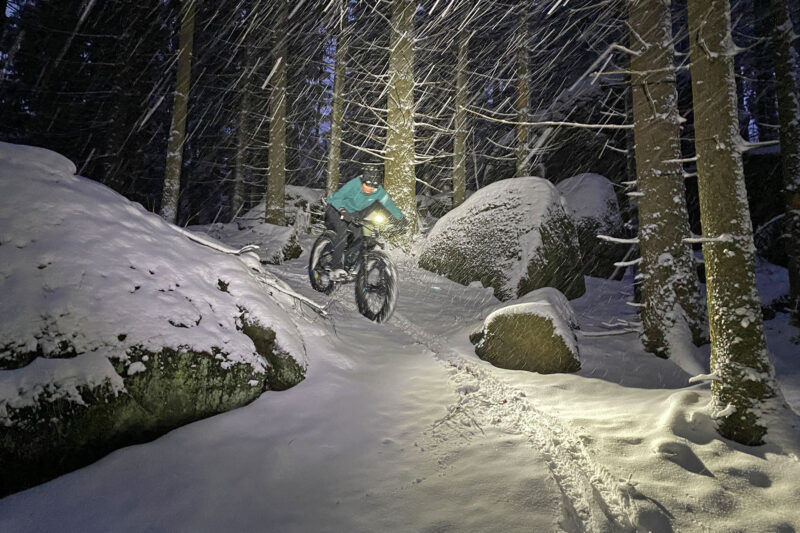
What I actually love the most on winter riding is the possibility to go wherever and feel a freedom of movement, not restricted on roads or defined paths. I like to call the concept Fatbike Freeride!
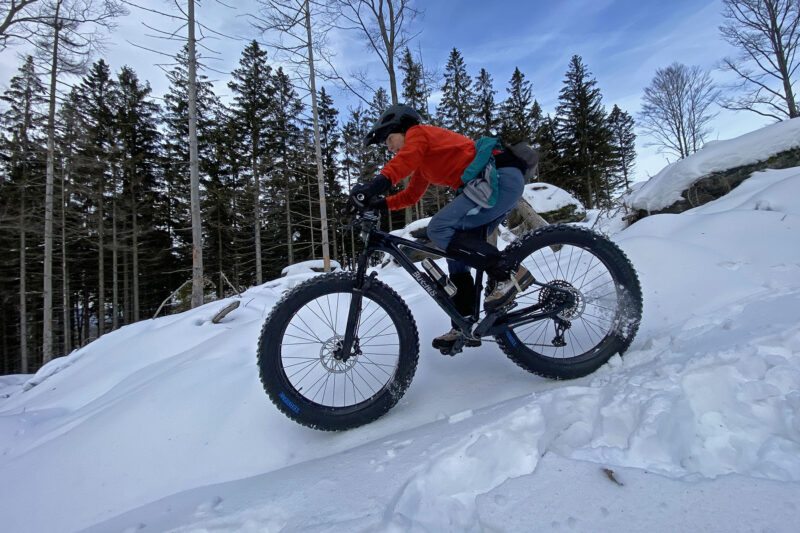
Fat biking in my mind is linked with the exciting opportunity to explore off-piste riding in untouched snow. Laying down fresh tracks. I can ride in areas that are nearly unrideable in summer. Or simply unpleasantly bumpy due to so many roots & rocks. Once we get that first 30cm of snow and it packs down & freezes, all terrain smooths out. And then, riding in the next couple centimeters of fresh powder is a real joy.
Upgrading for trails to the Manitou Mastodon 120mm suspension fork
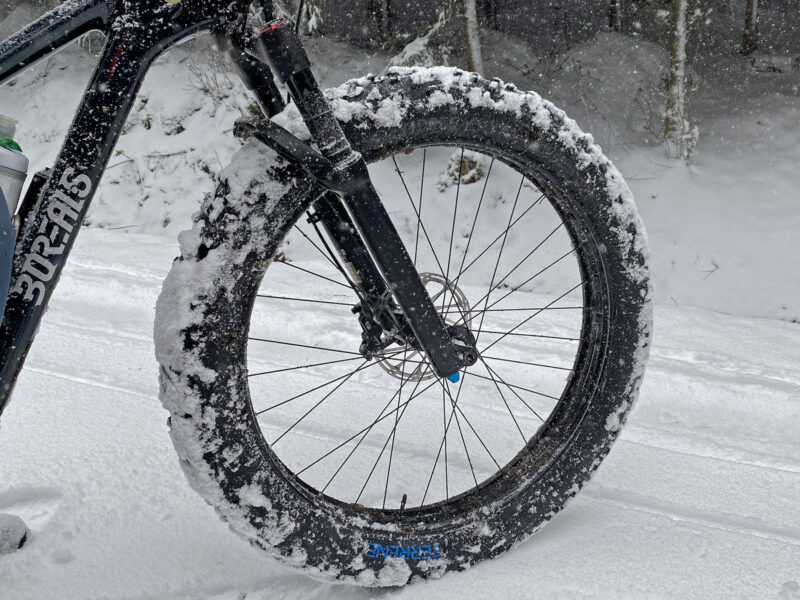
However, for such path-free riding or fat freeride trail riding, the super stiff carbon fork is less than ideal paired to the also stiff frame. Riding full-tilt downhill is possible. But it lacked some of the fun. And my upper body quickly tired from all the impacts. So, I swapped in suspension with the 120mm gen 2 Manitou Mastodon Pro fork. At the same time as swapping the fork, I also exchanged the 35mm Borealis bars for a straighter 31.6mm flat Beast carbon bar.
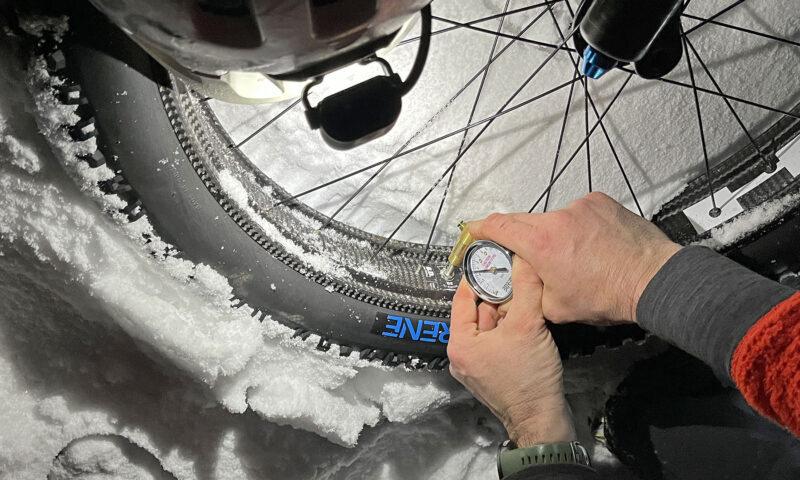
The swap made the Crestone a lot more fun as a winter trail bike. Then, the only thing I had to care about while riding was setting the appropriate tire pressure. Actually a tough call, often in the unbelievably-low 4-8psi range. A shout out to the analog Borealis low-pressure gauge for sorting tire pressure!
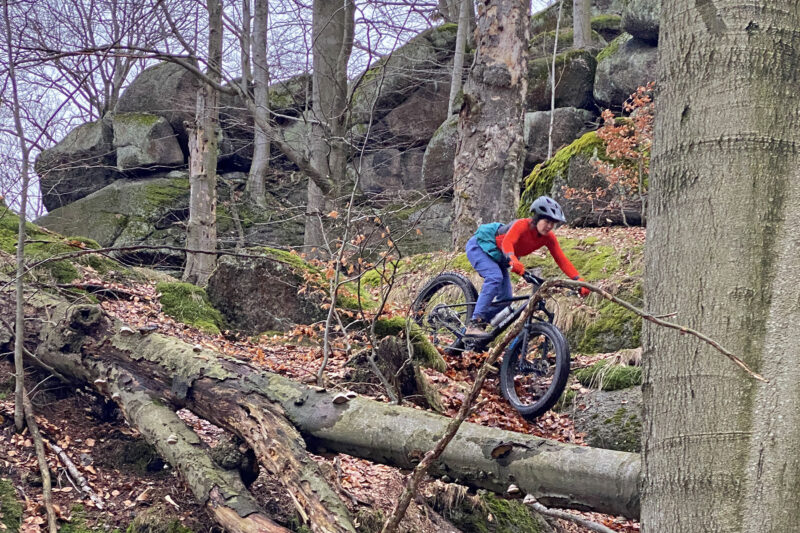
Now, I can imagine using the Crestone as an almost year-round hardtail with narrower or wider or studded tires, depending on the season. With huge tires, the bike is quite heavy to lift and get proper air time. But it’s still perfectly comfortable with small jumps or drops, up to say 1/2 meter. It is still a carbon hardtail after all.
Fat Bike Cons
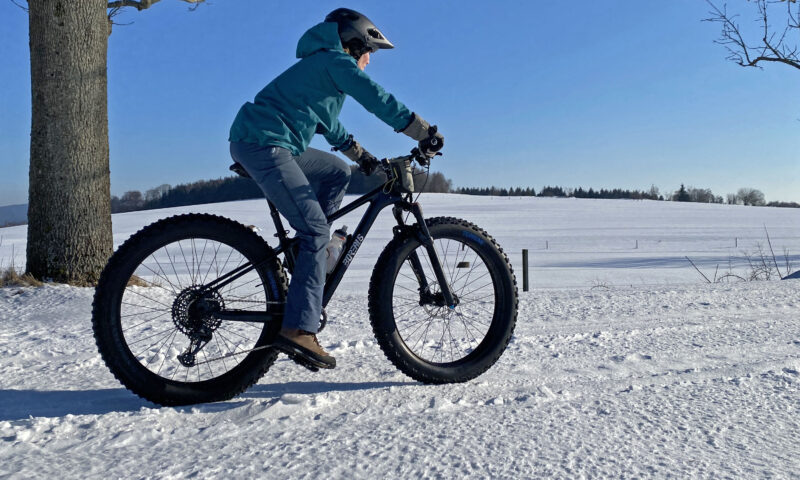
The only real downside being that wider bottom bracket (3cm more than a normal trail bike) that makes Q-factor, pedal stance, and then foot & knee placement wider than a more ideal setup. Since I ride this bike only with platform pedals, I can ‘cheat’ my feet a bit closer together. But the wide stance is certainly noticeable after swapping from my enduro bike in the autumn. And I don’t feel like I will do too many 100km rides on the Crestone.
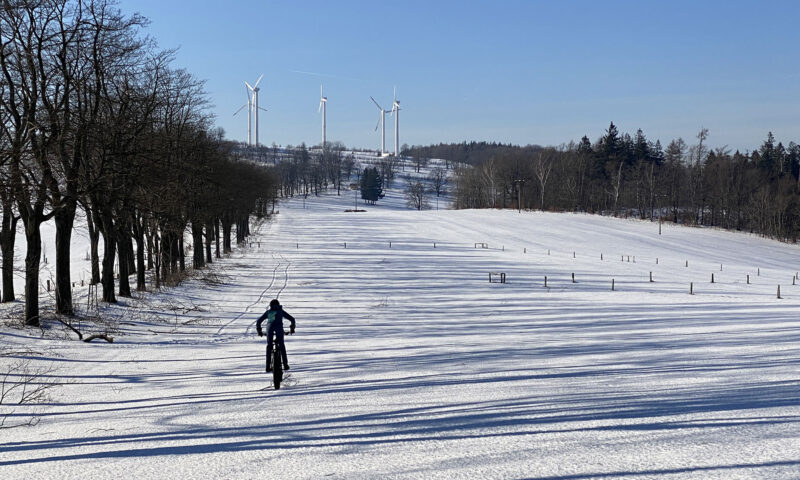
Also, it is necessary to mention that uphill pedaling efficacy was better with the fully rigid original setup. A suspension fork really depends on individual taste. For off-road fun trail riding I would certainly recommend the suspension fork. But for ultra longer snowy-packed road rides, I would go with the Borealis rigid fork. The one major benefit of the Manitou Mastodon fork though is that it is (relatively easily) internally adjustable down to 80mm of travel, which would be a happy medium compromise for many fat bike riders.
Bike-to-ski
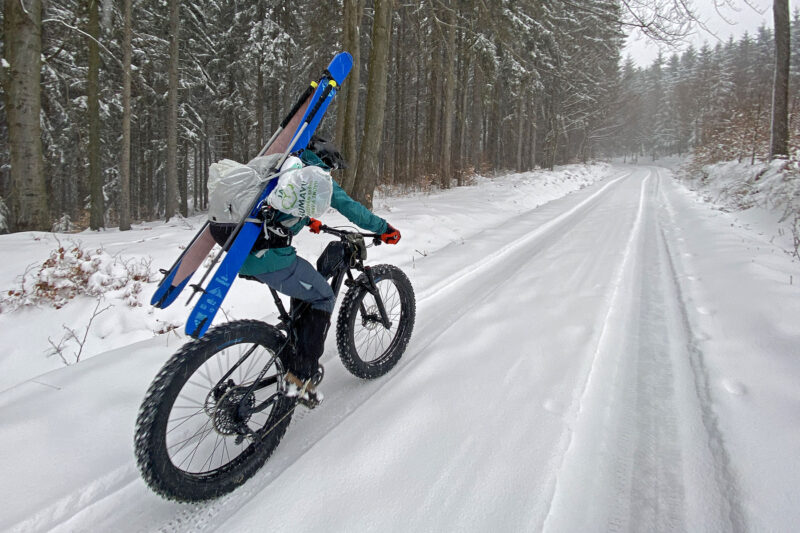
Wrapping up last winter, we played with using the fatbike as a commuter bike to go skiing, too. Ride to the local lift, pedal to groomed XC ski tracks, or just getting up to a good starting point for backcountry skiing. It seemed to me like a really cool idea. So with some versatile 4″ Cake Eaters, I strapped my skialp skis to my backpack and pedaled up to higher elevation to reach deep skiable snow.
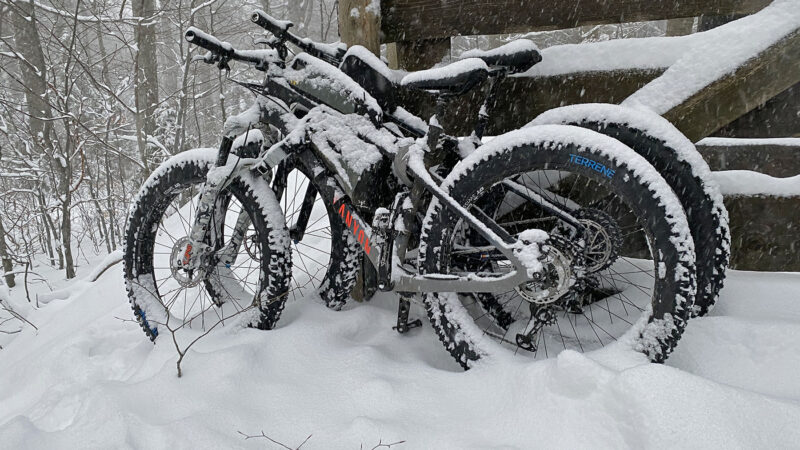
It involved a little bit of ski+pack shuffling to make it work. And pedaling up was slow going. Mostly in the granny gear. And we just locked the fat bikes up deep in the snowy woods when we couldn’t pedal any further. But it worked.
We’ll dial it in this winter for a bit more efficiency, and probably some longer approach rides. Because riding to ski is bit of a fun idea, and a pretty solid workout!
Beach life, too!
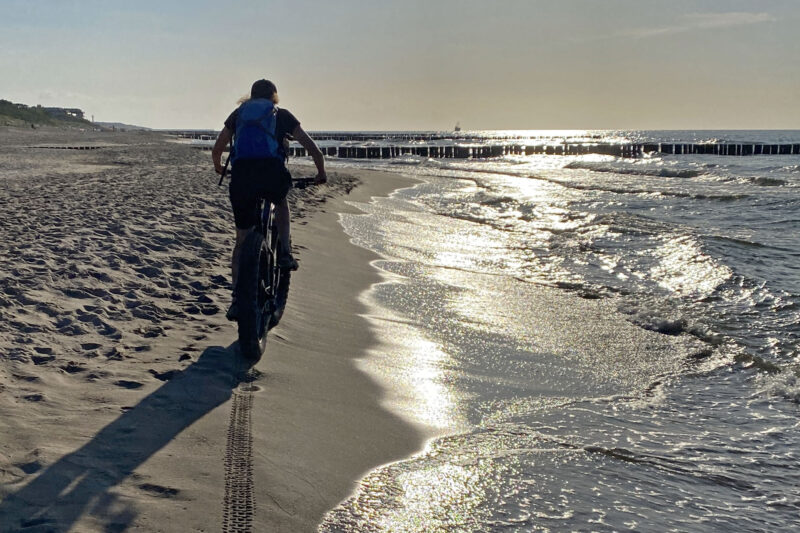
Looking at the fattest 5″ wide 26″ Terrene Johnny 5 tires, I struggled slowly with them a bit in the snow. But, on sandy beaches, they made the Crestone a lot of fun. That massively fat tire was able to cover soft, deep sand with grip and control.
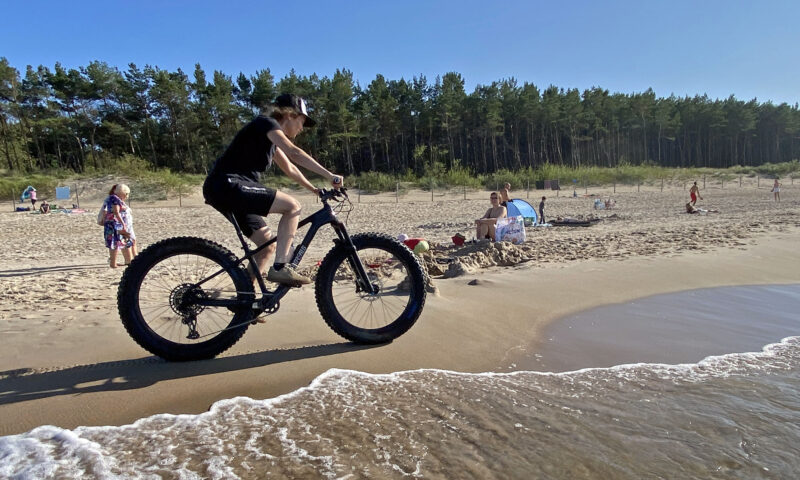
I don’t usually enjoy the relaxed, lazy beach life. And taking the Borealis Crestone with me to the Baltic seaside was a game changer. And, now I/m looking forward to the next fat bike beach trip, and exploring sand dunes, just as much as I was excited for the first powder this winter.
Winter returns and Final Thoughts on the Borealis Crestone carbon fat bike
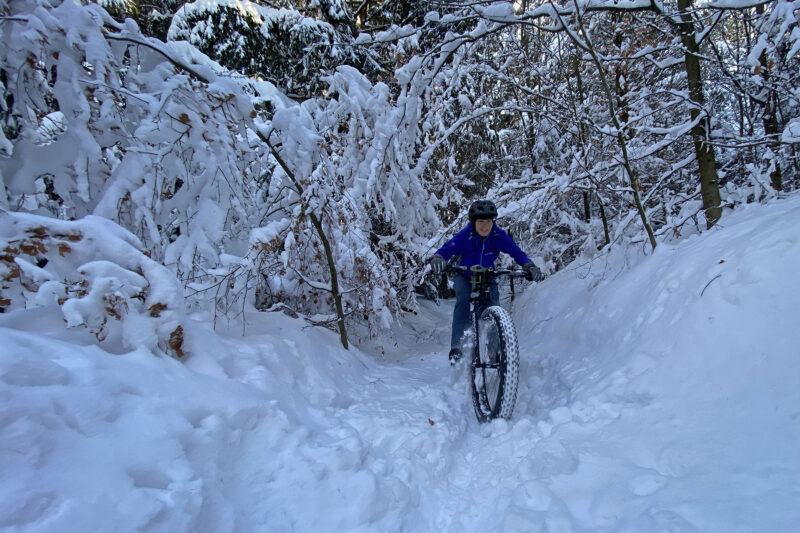
So where does that leave us two and a half thousand words later about an old bike?
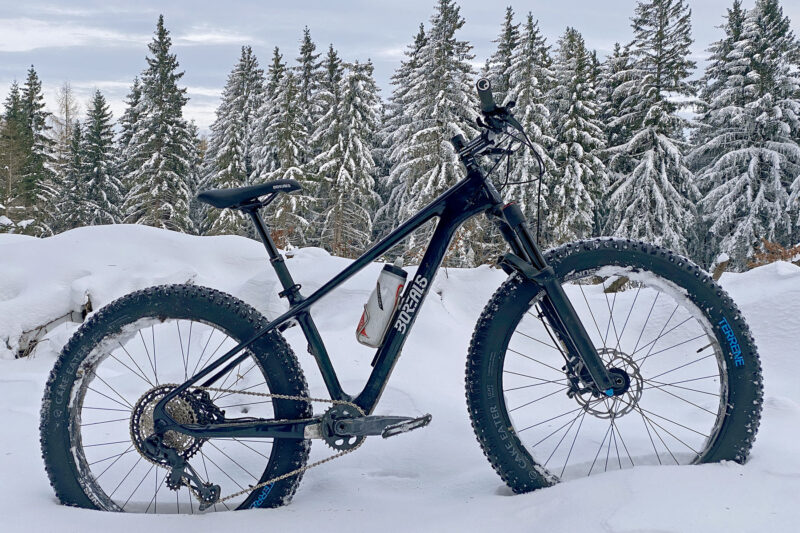
Well, the Borealis Crestone is a beautiful carbon fat bike that is genuinely a blast to ride. In all types of conditions. Yes, we’d love to see what Borealis could do by modernizing the bike with slightly longer, slightly slacker geometry, and maybe even an flip-chip at the dropout to give you the option for shorter summer chainstays. And really, if we keep riding this bike, we’ll sort out a 100mm BB crankset, but with narrower Q-factor.
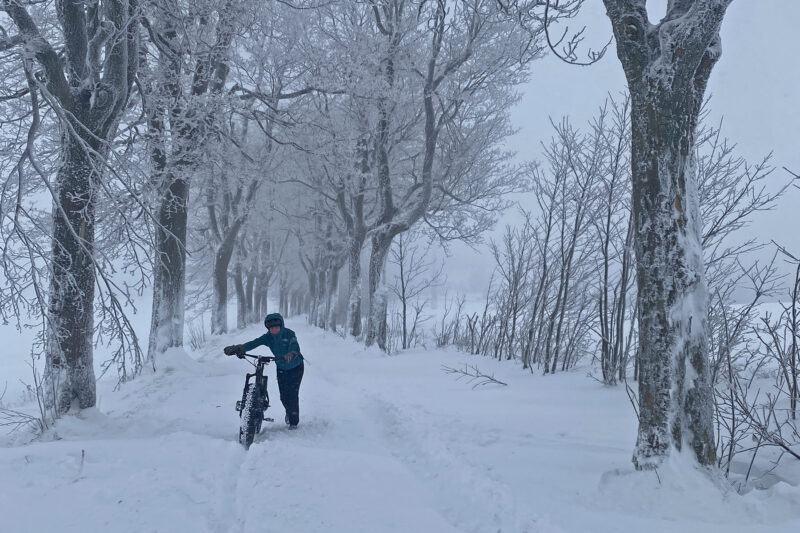
But in the end, the carbon Borealis Crestone is a light and versatile fat bike. And it brings smiles every time we ride. Whether riding groomed snow tracks in the winter, muddy root-strewn trails in the spring, or summer sand dunes… we’re happy all year round.
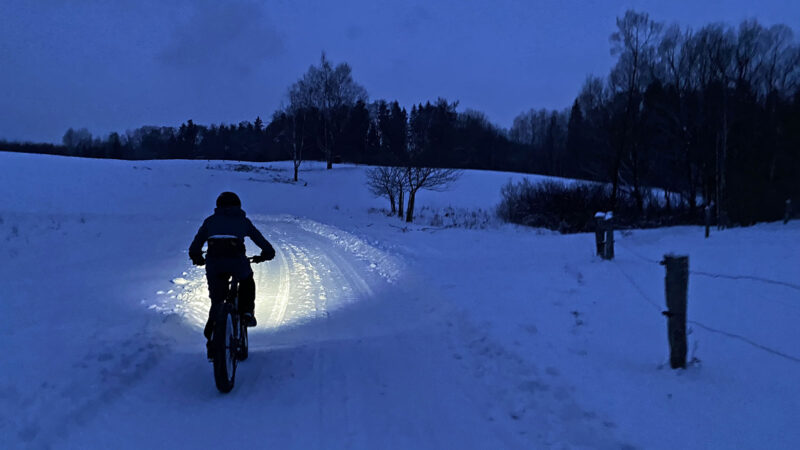
Oh yeah, and it’s hard to argue with this URL:
